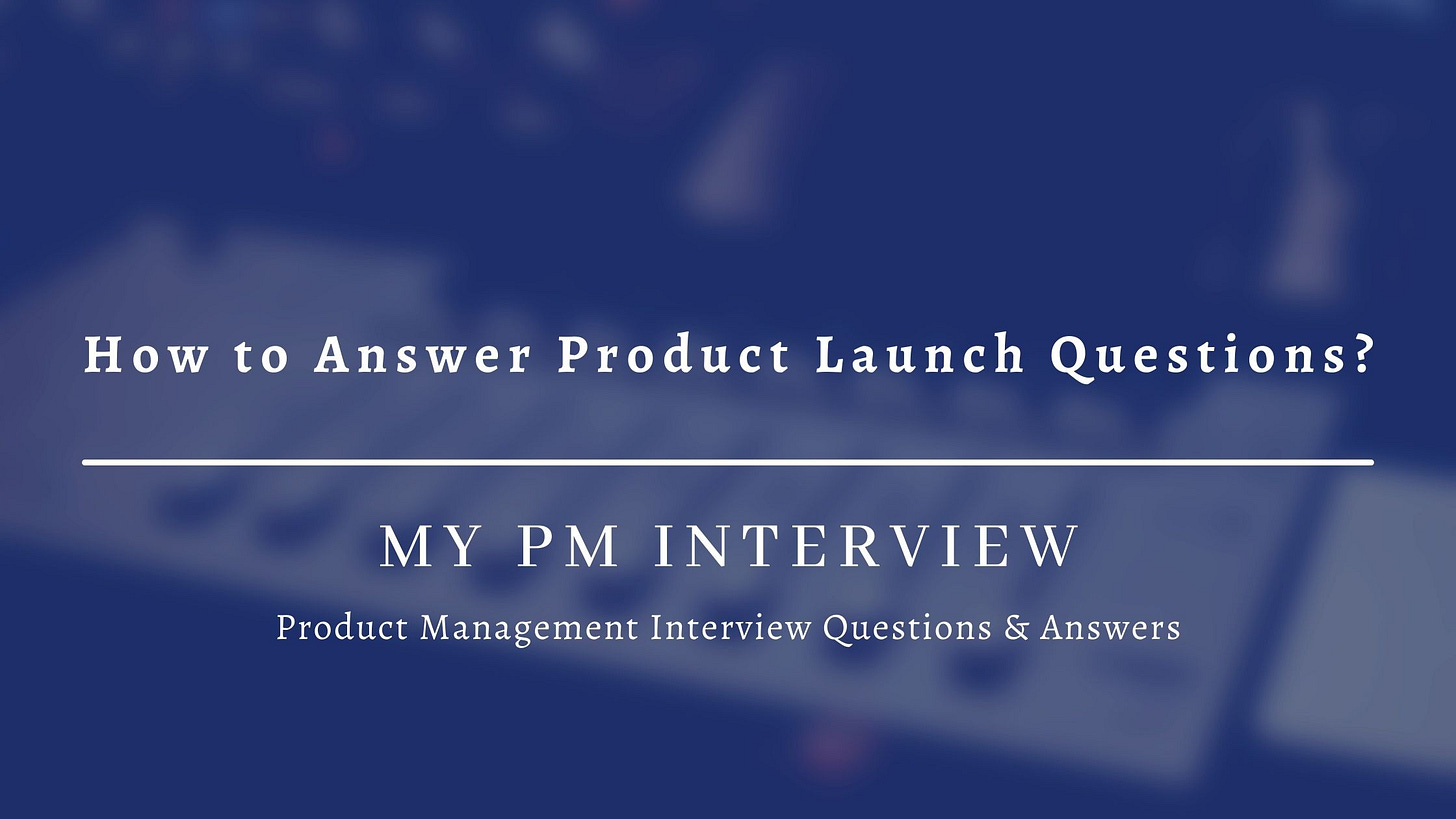How to Answer Product Launch Questions? - My PM Interview
Here is a step by step guide on how to answer Product Launch Questions with examples
Why are Product Launch Questions asked?
Product launch questions are commonly asked in product management interviews for a number of reasons. These questions help assess the candidate's,
Ability to plan and execute successful product launches.
Understanding of the various factors that can impact the success of a product.
One of the main reasons why product launch questions are asked in product management interviews is to gauge the candidate's ability to plan and execute a successful product launch. This includes identifying target markets, developing marketing strategies, and coordinating with various teams to ensure that the product is launched on time and within budget. A candidate who is able to effectively plan and execute a product launch demonstrates strong project management skills and the ability to work with cross-functional teams.
Another reason why product launch questions are asked in product management interviews is to assess the candidate's understanding of the various factors that can impact the success of a product. This includes understanding the competitive landscape, identifying customer needs and pain points, and being able to effectively communicate the value of the product to potential customers. A candidate who is able to demonstrate a thorough understanding of these factors is more likely to be successful in launching and managing a product.
In addition to assessing the candidate's ability to plan and execute a successful product launch, product launch questions can also help the interviewer understand the candidate's thought process and approach to problem-solving. For example, a candidate who is able to clearly articulate their approach to identifying target markets and developing marketing strategies demonstrates strong analytical skills and the ability to think strategically.
Overall, product launch questions are an important aspect of product management interviews as they help the interviewer assess the candidate's ability to successfully plan and execute product launches, as well as their understanding of the various factors that can impact the success of a product. A candidate who is able to effectively answer these questions is more likely to be successful in a product management role.
How to answer a Product Launch question?
Here is a step-by-step guide/framework, you should follow while answering product launch interview questions:
Describe the Product. (P)
Ask clarifying questions to narrow the scope. (Q)
Define the Goal you want to achieve. (G)
Describe your strategy to achieve your goals (S)
Develop a Three-Phase implementation plan. (P)
Summarize your answer (S)
(PQ-GS-PS) -> Mnemonic to help you remember the steps & their order.
Now, let’s go through each of the above points and understand them in details,
Here is an example you can refer:
Step 1: Describe the Product
The key thing to keep in mind while solving any product problem is that you will have to keep the interviewer on the same page as you are on every step.
Once, you have a clear understanding of the question, start by describing how you understand the product. Cover the following things about the product,
What does the product do?
Who is it for?
How are they using it?
What pain point is it solving for its users?
If you get a question where you are not familiar with the product, you may ask the interviewer to give a brief idea about the product. They would usually help out.
Before continuing, make sure the interviewer concurs with your understanding of the product.



